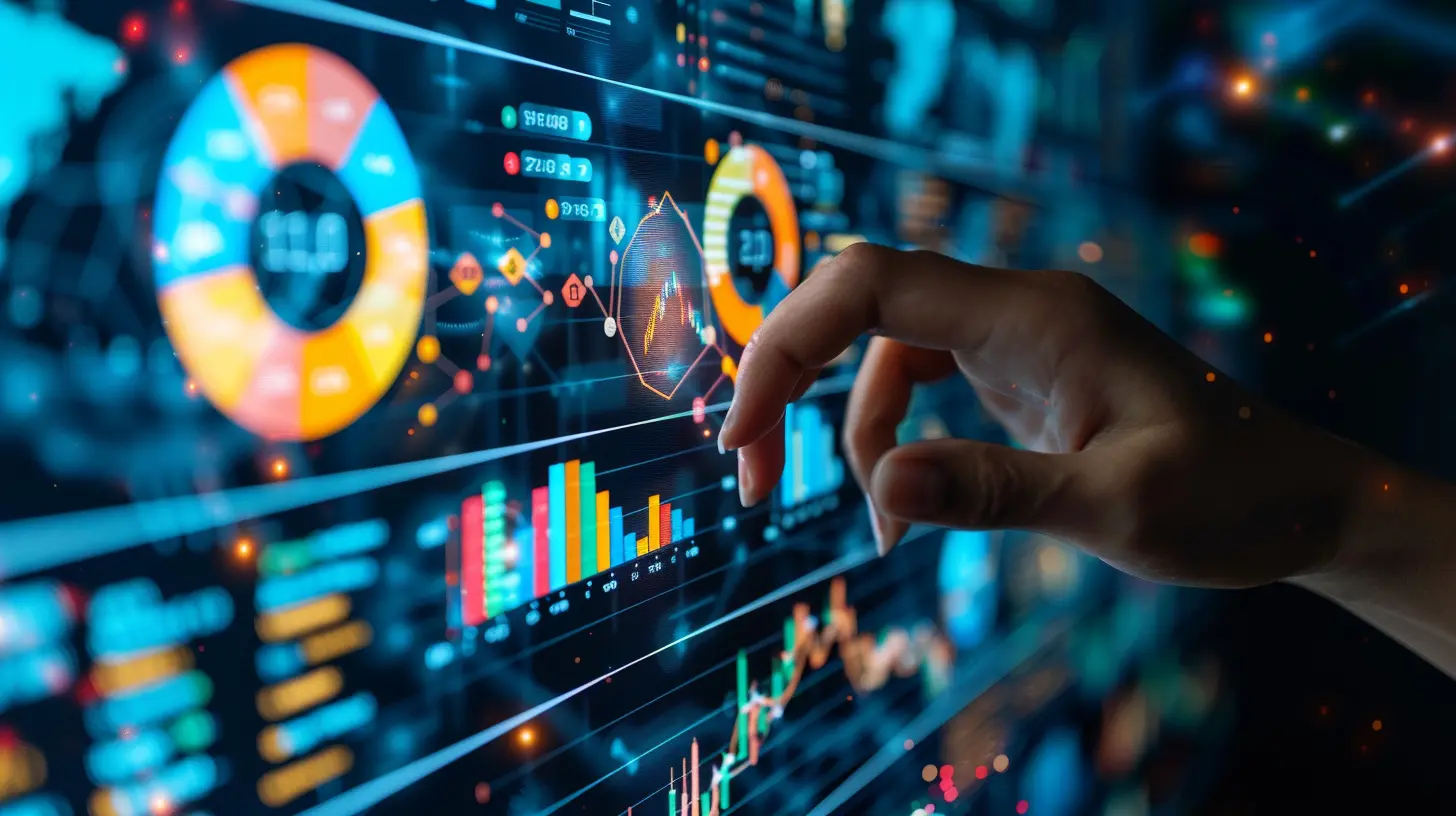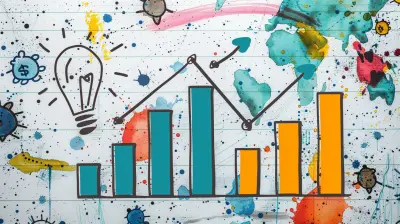The Synergy Between Analytics and Business Intelligence in the Digital Age
2 August 2025
Ah, analytics and business intelligence—two buzzwords that get thrown around by corporate bigwigs trying to sound tech-savvy. But let’s be real, if you ask most people what they actually mean, you’ll either get a blank stare or a long-winded monologue filled with jargon that makes your head spin.
But here’s the deal: these two aren’t just fancy terms to impress your boss. They’re the ultimate power couple of the digital world. Think of them as Batman and Robin, peanut butter and jelly, or coffee and Monday mornings—you can technically have one without the other, but why would you?
So, let’s break it down and figure out why businesses in this digital-first world can’t afford to ignore the magical duo of analytics and business intelligence (BI). 
What is Business Intelligence (BI), And Why Should You Care?
Alright, let’s start with the basics. Business Intelligence (BI) is essentially your company’s crystal ball—minus the mysticism and with a lot more data crunching. It’s all about collecting, processing, and visualizing data to help businesses make informed decisions.If BI were a person, it would be that friend who always has their life together—organized, logical, and always prepared with facts before making a move. BI tools dig into historical and real-time data, organize it into dashboards, graphs, and reports, and give decision-makers something tangible to act on.
In short: BI takes piles of scattered data, makes sense of it, and hands you insights on a silver platter. 
Analytics: The Brain Behind the Operation
Now, let’s talk about analytics. If BI is your ultra-organized friend, analytics is the genius with a knack for predictions. It goes beyond just telling you what happened—analytics tells you why it happened and what might happen next.There are different types of analytics:
- Descriptive Analytics: The "historian" of the group—analyzing past data to show what happened.
- Diagnostic Analytics: The detective—figuring out why something occurred.
- Predictive Analytics: The fortune teller—using historical data to predict future trends.
- Prescriptive Analytics: The strategic mastermind—offering recommendations on what to do next.
Analytics takes BI’s neatly organized data, applies statistical models, and delivers intelligent insights. It’s like BI sets the table, and analytics serves the gourmet meal. 
Why Analytics and BI Are the Ultimate Business Power Duo
Now, here’s where things get fun. Analytics and BI might sound like they do the same job, but they actually complement each other perfectly—like that one coworker who covers for you when you "accidentally" miss a meeting.1. BI Organizes, Analytics Predicts
BI gives you the data in a digestible format, and analytics dives deeper to show patterns and future trends. Without analytics, BI is just a static list of numbers. Without BI, analytics is a shot in the dark.2. Better Decision-Making (a.k.a. No More Guesswork)
Would you rather make business decisions based on actual data or your gut feeling? Thought so. By combining BI and analytics, companies can make data-driven decisions that aren’t just random stabs in the dark.3. Real-Time Insights = Faster Reactions
Imagine running an eCommerce store and having access to real-time reports on customer behavior, product demand, and market trends. With BI, you see what’s happening right now. With analytics, you adjust your strategy instantly. No more playing catch-up.4. Competitive Advantage (Because Who Likes Losing?)
In today’s digital age, companies that don’t leverage BI and analytics are like people still using flip phones—outdated and struggling to keep up. Companies using these tools can predict market trends, optimize operations, and crush competitors who are still relying on outdated spreadsheets.
How Businesses Use BI and Analytics in the Real World
Let’s be honest, all this talk about data sounds great, but what does it actually do for businesses?1. Retail: Knowing What Customers Want Before They Do
Ever wonder why Amazon always seems to know exactly what you need? That’s BI and analytics in action. Retailers analyze shopping habits, predict what customers are likely to buy next, and personalize recommendations to boost sales.2. Healthcare: Saving Lives with Data
Hospitals use BI dashboards to track patient data, identify disease trends, and improve treatment plans. Meanwhile, predictive analytics helps spot potential health risks before they become major issues. Data-driven healthcare isn’t just efficient—it’s life-saving.3. Finance: Catching Fraudsters Red-Handed
Banks leverage BI and analytics to detect suspicious transactions, predict financial trends, and optimize investment strategies. Without them, fraud detection would be like trying to spot a needle in a haystack.4. Marketing: Creating Ads That Actually Work
Marketers don’t just throw ads out into the world and hope for the best (well, the smart ones don’t). They use analytics to track customer behavior, A/B test campaigns, and optimize strategies in real time.5. Manufacturing: Cutting Waste, Maximizing Profit
Factories track performance metrics, analyze production efficiency, and forecast demand—all thanks to BI and analytics. The result? Less waste, lower costs, and higher profits.The Future of BI and Analytics: Smarter, Faster, and More AI-Driven
As if BI and analytics weren’t already impressive, AI is now taking them to a whole new level. Machine learning algorithms can process massive datasets in record time, automate decision-making, and identify trends humans would probably miss.Here’s what’s coming next:
- Automated BI Reports – No more manually pulling data—smart dashboards will do it for you.
- Natural Language Processing (NLP) – AI-powered BI tools that let you ask questions like, "What were my top-selling products last month?" and get instant answers.
- Advanced Predictive Models – Even more accurate forecasting powered by AI.
In other words, businesses that integrate AI with BI and analytics are about to become way smarter than their competition.
So, Do You Really Need BI and Analytics?
Let’s put it this way: If you’re totally fine making business decisions based on gut instinct and outdated reports, feel free to ignore BI and analytics. But if you actually want to outperform competitors, optimize operations, and drive growth—then yes, you need them.They’re not just "nice to have"—they’re essential in today’s digital age. Without them, your business strategy is about as effective as using a flip phone in 2024. So, whether you run a startup or a Fortune 500 company, it’s time to embrace the power of BI and analytics before your competitors leave you in the dust.
Final Thought: It’s Not Magic, It’s Logic
At the end of the day, the synergy between BI and analytics isn’t some mystical concept—it’s just smart decision-making backed by cold, hard data. Businesses that harness this power will thrive; those that don’t? Well, they’ll just be another cautionary tale in the history books.So, what’s it going to be? Data-driven success or outdated guesswork? The choice is yours.
all images in this post were generated using AI tools
Category:
Business AnalyticsAuthor:

Matthew Scott
Discussion
rate this article
1 comments
Dominique McGovern
Great insights! Analytics and Business Intelligence truly enhance decision-making.
August 31, 2025 at 3:13 AM

Matthew Scott
Thank you! I’m glad you found the insights valuable. Analytics and Business Intelligence indeed play a crucial role in informed decision-making.


